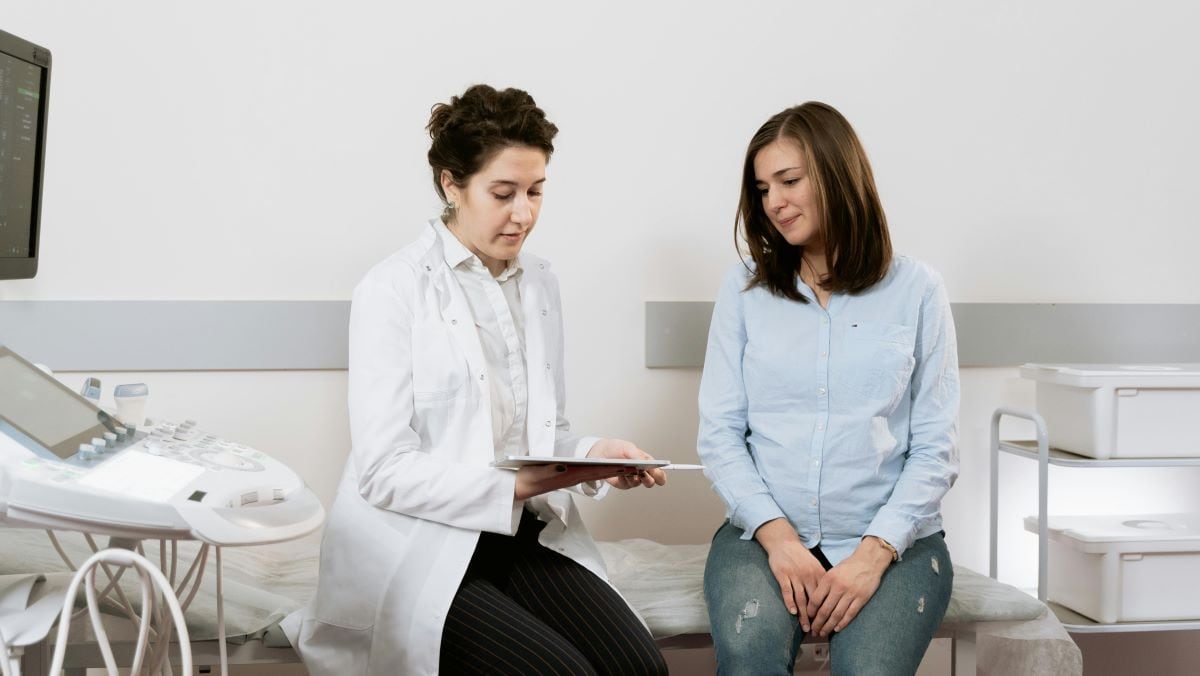Key points
- Learn how varicella can present among specific populations, including people with HIV, patients who are immunocompromised, pregnant, and in newborns.
- Find what treatments are available for people at high risk for severe varicella.

At-risk populations
Immunocompromised patients without evidence of immunity to varicella are at high risk. These can include:
- People with leukemia or lymphoma.
- People on medications that suppress the immune system, such as high-dose systemic steroids or chemotherapeutic agents.
- People with cellular immune deficiencies or other immune system problems.
Those who get varicella are at risk of developing visceral dissemination (VZV infection of internal organs). This leads to pneumonia, hepatitis, encephalitis, and disseminated intravascular coagulopathy.
This population can have an atypical varicella rash with more lesions. They can also be sick longer than immunocompetent people who get varicella.
New lesions may:
- Continue to develop for more than 7 days
- Appear on the palms and soles
- Be hemorrhagic
Children with HIV infection tend to have atypical rash with new crops of lesions presenting for weeks or months. The lesions may initially be typical maculopapular vesicular but can later develop into non-healing ulcers that become necrotic, crusted, and hyperkeratotic. This is more likely to occur in HIV-infected children with low CD4 counts.
Some studies have found that VZV dissemination to the visceral organs is less common in children with HIV than in other immunocompromised people with VZV infection. The rate of complications may also be lower in HIV-infected children on antiretroviral therapy, or HIV-infected people with higher CD4 counts at the time of varicella infection. Retinitis can occur among HIV-infected children and adolescents.
Most adults, including those who are HIV-positive, have already had varicella and are VZV seropositive. As a result, varicella is relatively uncommon among HIV-infected adults.
Pregnant women who get varicella are at risk for serious complications (primarily pneumonia) and in some cases, may die as a result of varicella. Some studies have suggested that both the frequency and severity of VZV pneumonia are higher when varicella is acquired during the third trimester. However, other studies have not supported this observation.
If a pregnant patient gets varicella in the first or early second trimester, the baby has a small risk (0.4 to 2.0%) of being born with congenital varicella syndrome. The baby may have scarring on the skin, abnormalities in limbs, brain, and eyes, and low birth weight.
The varicella vaccine is contraindicated for pregnant patients.
If a pregnant patient develops varicella rash from 5 days before to 2 days after delivery, the newborn will be at risk for neonatal varicella. Historically, the mortality rate for neonatal varicella was reported to be about 30%, but the availability of VZV immune globulin and intensive supportive care have reduced the mortality to about 7%.
Premature babies exposed to varicella or herpes zoster are at risk for severe varicella:
- Hospitalized premature infants born at ≥28 weeks of gestation whose mothers do not have evidence of immunity.
- Hospitalized premature infants born at <28 weeks of gestation or who weigh ≤1,000 grams at birth regardless of their mothers' varicella immunity status.
Treatment options
Varicella-zoster immune globulin is recommended for people exposed to varicella or herpes zoster who cannot receive varicella vaccine. These include people:
- That lack evidence of immunity to varicella.
- Whose exposure is likely to result in infection.
- At high risk for severe varicella.
Varicella-zoster immune globulin can prevent varicella from developing or lessen the severity of the disease.
The varicella-zoster immune globulin product licensed for use in the United States is VariZIG™. VariZIG should be given as soon as possible after exposure to VZV. It can be given within 10 days of exposure. VariZIG is commercially available from a broad network of specialty distributors in the United States.
The American Academy of Pediatrics (AAP) recommends that oral acyclovir or valacyclovir treatment can be considered for certain groups at increased risk for moderate-to-severe varicella.
Populations at high risk include:
- Healthy people older than 12 years of age.
- People with chronic cutaneous or pulmonary disorders.
- People who receive long-term salicylate therapy.
- People who receive short, intermittent, or aerosolized courses of corticosteroids.
Some healthcare providers may choose to use oral acyclovir or valacyclovir for secondary cases within a household. For maximum benefit, oral acyclovir or valacyclovir therapy should be given within the first 24 hours after the varicella rash starts.
Oral acyclovir or valacyclovir therapy is not recommended by AAP for use in otherwise healthy children experiencing typical varicella without complications. Acyclovir is a category B drug based on the U.S. Food and Drug Administration's Drug Risk Classification in pregnancy.
Some experts recommend oral acyclovir or valacyclovir for pregnant women with varicella, especially during the second and third trimesters. Clinical guidance recommends intravenous acyclovir for pregnant women with viral-mediated complications of varicella, such as pneumonia.
Intravenous acyclovir therapy is recommended for:
- Severe disease (disseminated VZV such as pneumonia, encephalitis, thrombocytopenia, severe hepatitis).
- Varicella in immunocompromised patients (including those treated with high-dose corticosteroid therapy for >14 days).
Famciclovir is available for VZV infections in adults, but its efficacy and safety are unclear for children.
Foscarnet should be used to treat the VZV infection in cases of infections caused by acyclovir resistant VZV strains (usually occur in immunocompromised people). However, the CDC recommends a consultation with an infectious disease specialist.
